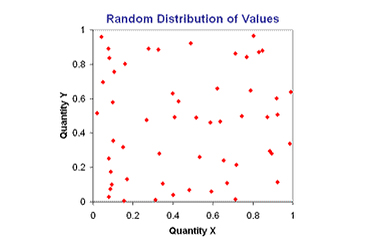Main Menu
- Home
- Product Finder
- Calibration Systems
- Calibration Services
- Digital Sensing
- Industrial Vibration Calibration
- Modal and Vibration Testing
- Non-Destructive Testing
- Sound & Vibration Rental Program
- Learn
- About Us
- Contact Us
 When uncertainty contributors are evaluated, they can either be based on statistical methods (called a Type A evaluation), or by other means (called a Type B evaluation). In previous articles we have discussed some of the other methods used such as the
systemic uncertainty from the reference accelerometer. The goal of this article is to discuss statistical methods in greater detail.
When uncertainty contributors are evaluated, they can either be based on statistical methods (called a Type A evaluation), or by other means (called a Type B evaluation). In previous articles we have discussed some of the other methods used such as the
systemic uncertainty from the reference accelerometer. The goal of this article is to discuss statistical methods in greater detail.
In order to properly evaluate an uncertainty contributor by a statistical method, any variables related to the contributor must be allowed to change. Random uncertainty contributors are often the easiest to quantify using a statistical method because the only variable is time. Making repeated measurements of the same sensor and determining the standard deviation of the results of these measurements allows time to vary and the results conform to a Normal (or Gaussian) Distribution model.
Another contributor that can be evaluated statistically is uncertainty caused by thermal effects. More care must be taken for this contributor as there are two conditions that must be true. The first condition is that the variance laboratory temperature has a normal distribution. This is usually accomplished in controlled labs by making the measurements at different times during the day. The second assumption is that the sensors have a linear response to changes in temperature. When sensors are used near ambient temperature, this assumption will be true. Assuming these two conditions are met, the effects of temperature will conform to the same distribution as changes in temperature (normal distribution) and the standard deviation is all that needs to be calculated.
There are a number of other contributors that can be estimated in a similar manner as temperature such as mounting torque, cable routing, humidity, etc.
One fact that may have become apparent is that during a statistical analysis, in some cases it is not possible to measure some uncertainty contributors independently of other contributors. For example, when evaluating the thermal effects on uncertainty, the results would certainly reflect random contributions to uncertainty because it is not possible to vary temperature independent of time.
While this may seem like a severe limitation in the statistical methods, it is in fact a benefit. If all contributors being estimated independently conform to a normal distribution, then the overall effect of the combination of these contributors will also conform to a normal distribution. This means that if you were to design your evaluation carefully, it is possible to evaluate multiple contributors simultaneously saving time and effort.